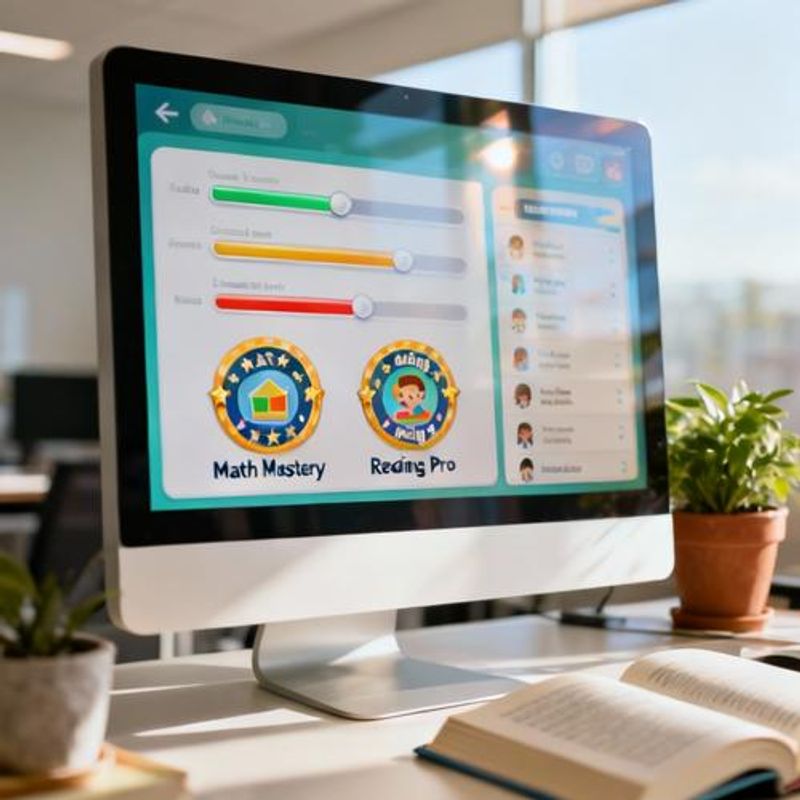Complete Guide to Building Effective Gamified Applications for Educational Success

Struggling to keep learners engaged with traditional educational content? Building a gamified application isn't just about adding points and badges – it's about creating meaningful learning experiences that drive real behavioral change. This comprehensive guide reveals the proven strategies, implementation frameworks, and design principles that transform passive learners into active participants, backed by real-world case studies from successful EdTech implementations.

Why Gamification Matters More Than Ever in Education
Educational technology professionals face unprecedented challenges: declining attention spans, remote learning fatigue, and the need to demonstrate measurable learning outcomes. Traditional LMS platforms report completion rates as low as 15%, while learners abandon courses within the first week. Gamified applications address these core issues by leveraging intrinsic motivation principles that tap into our natural desire for achievement, progress, and social connection. The challenge isn't whether to gamify – it's how to do it effectively without trivializing the learning experience.
Key Takeaways: Essential Elements of Successful Gamified Applications
Before diving into implementation details, here are the critical success factors that separate effective gamified applications from superficial 'pointsification':
- Meaningful progression systems that mirror actual skill development
- Immediate feedback loops that reinforce learning objectives
- Social features that encourage collaboration over competition
- Adaptive difficulty that maintains optimal challenge levels
- Data-driven personalization based on learning patterns

The Foundation: Core Mechanics That Drive Engagement
Building an effective gamified application starts with understanding the psychological drivers behind engagement. The most successful implementations focus on three core mechanics: Progressive Mastery, Social Achievement, and Narrative Context. Progressive Mastery involves breaking complex learning objectives into achievable milestones with clear skill trees and competency mapping. Instead of generic point systems, create advancement paths that reflect real-world expertise development. Social Achievement leverages peer recognition and collaborative challenges, but avoid simple leaderboards that can discourage struggling learners. Implement team-based goals, peer mentoring systems, and celebration of diverse achievement types. Narrative Context wraps learning content in meaningful storylines that give purpose to each activity, making abstract concepts tangible through scenarios and role-playing elements.
Implementation Framework: From Concept to Launch
Phase 1: Learning Objective Mapping - Start by identifying specific, measurable learning outcomes and map them to appropriate game mechanics. Use the MDA framework (Mechanics, Dynamics, Aesthetics) to ensure game elements serve educational goals rather than distracting from them. Phase 2: User Journey Design - Create detailed user personas representing different learner types and motivation profiles. Design onboarding flows that gradually introduce gamification elements without overwhelming new users. Phase 3: Technical Architecture - Choose scalable platforms that support real-time feedback, analytics tracking, and social features. Consider APIs for integration with existing LMS systems and assessment tools. Phase 4: Content Integration - Develop assessment criteria that balance educational rigor with engaging gameplay. Create rubrics for measuring both learning progress and engagement metrics.
Practical Examples: Proven Gamification Patterns
Adaptive Questing System: Replace traditional assignments with 'quests' that branch based on learner performance and interests. Each quest includes context-setting narratives, clear objectives, resource recommendations, and multiple solution paths. Skill Badge Portfolios: Design digital credentials that represent specific competencies rather than course completion. Include evidence requirements, peer validation components, and industry alignment to increase real-world value. Collaborative Guild System: Organize learners into diverse teams with complementary skills for long-term projects. Implement role rotation, cross-training requirements, and group achievement tracking to encourage peer learning and knowledge sharing.

Common Pitfalls and How to Avoid Them
Over-Gamification Trap: Adding game elements to every interaction creates cognitive overload and dilutes the impact of meaningful rewards. Focus on high-impact touchpoints like skill demonstrations and collaborative milestones. Competitive-Only Design: Leaderboards and rankings can demotivate learners who fall behind early. Balance competitive elements with cooperative challenges and personal progress tracking. Shallow Reward Systems: Points and badges without clear connection to learning objectives become meaningless quickly. Ensure every game mechanic reinforces educational goals and provides genuine value. Technical Complexity Creep: Advanced gamification features can overwhelm users and complicate maintenance. Start with core mechanics and iterate based on user feedback and engagement data.
Measuring Success and Iterating Forward
Successful gamified applications require continuous optimization based on both engagement metrics and learning outcomes. Track completion rates, time-on-task, peer interaction frequency, and skill assessment scores alongside traditional analytics. Implement A/B testing for new game mechanics and gather qualitative feedback through user interviews and observational studies. The most effective approach combines quantitative performance data with learner sentiment analysis to identify optimization opportunities.
Next Steps: Transform Your Educational Platform
Building effective gamified applications requires balancing engaging mechanics with solid educational design principles. Start by auditing your current learner engagement challenges, then pilot small gamification elements with measurable objectives. Focus on creating meaningful progression systems that celebrate diverse learning achievements and foster collaborative growth. Ready to implement these strategies? Begin with user journey mapping for your specific learner demographics, then prototype core mechanics before full-scale development. Consider partnering with game design professionals to ensure your gamified application delivers both educational value and sustained engagement.